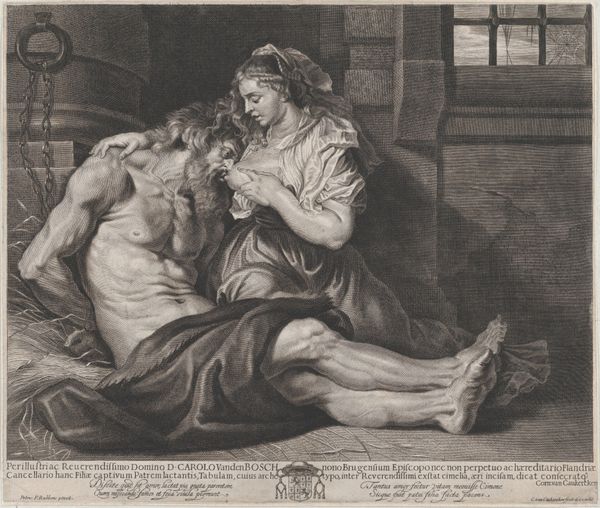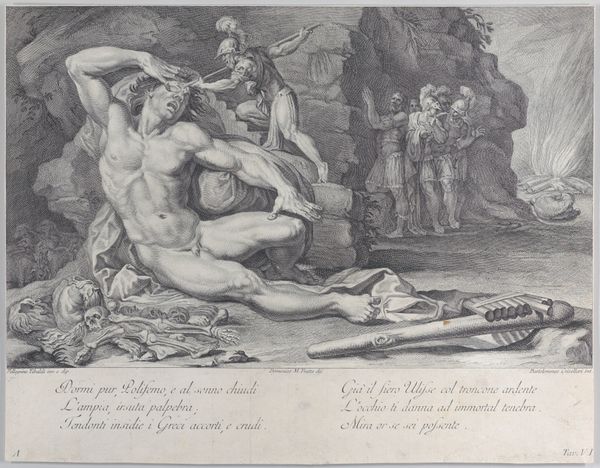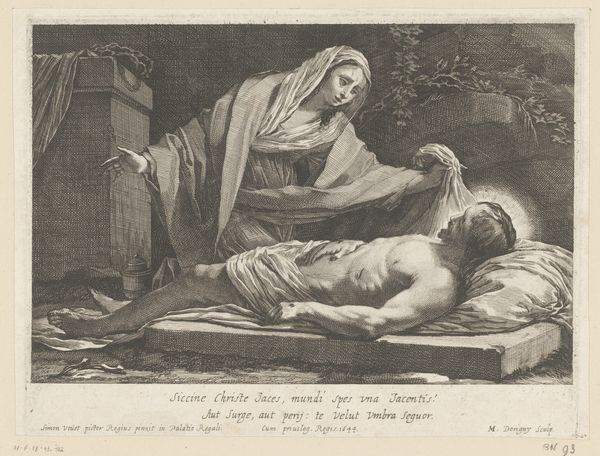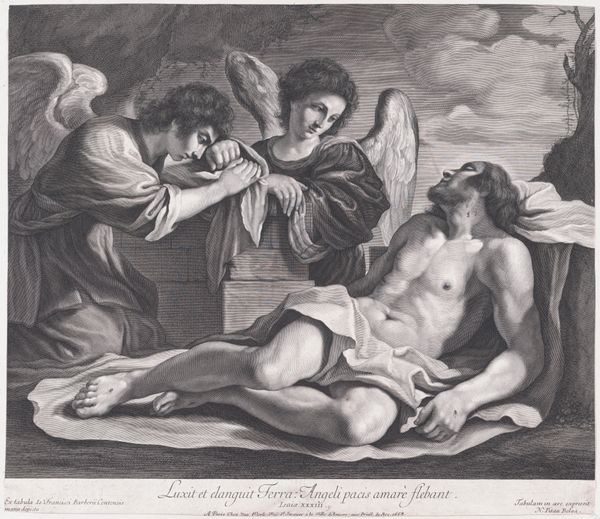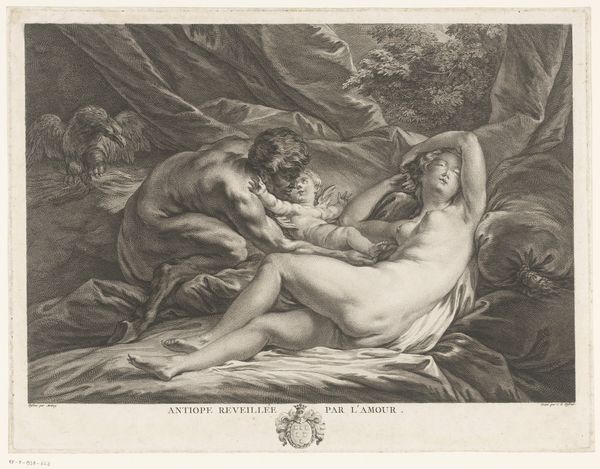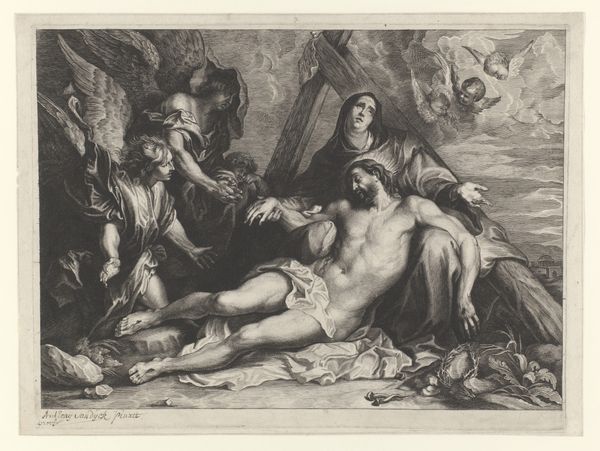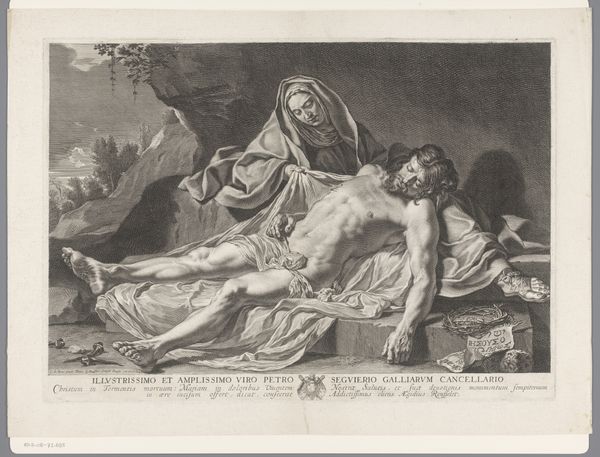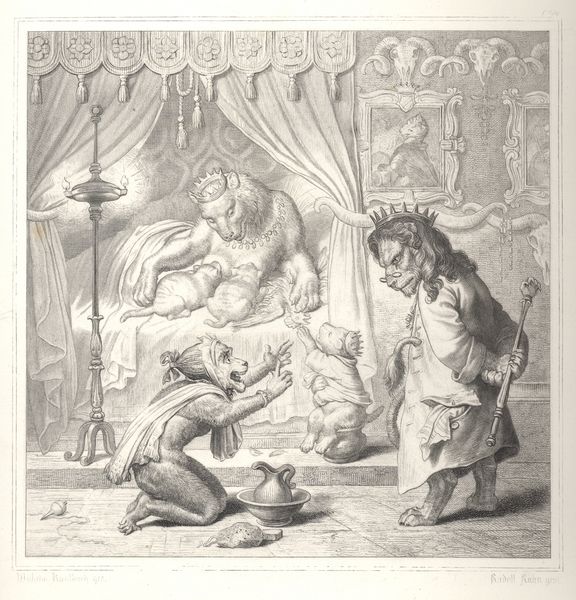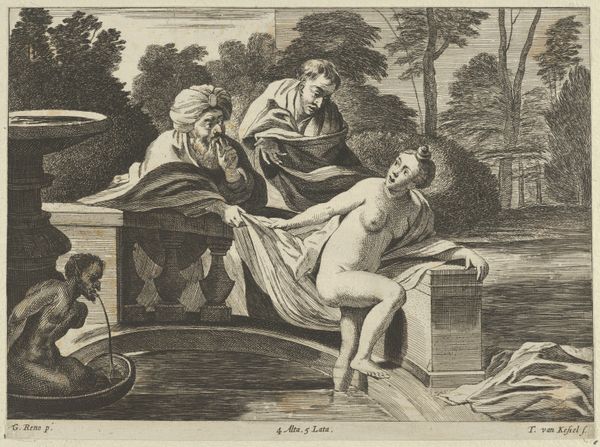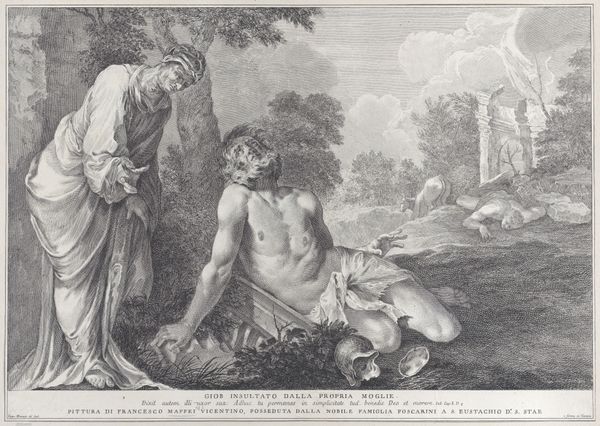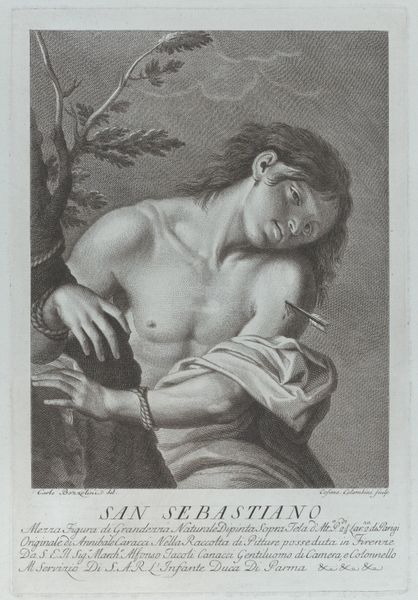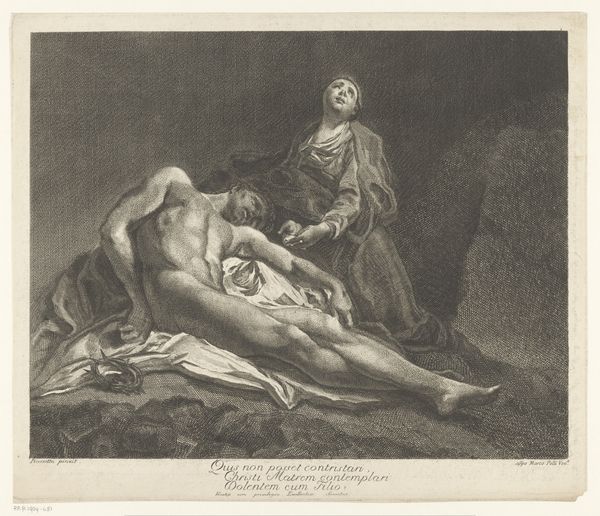
print, engraving
#
portrait
#
allegory
#
baroque
# print
#
old engraving style
#
figuration
#
historical photography
#
history-painting
#
nude
#
engraving
Dimensions: height 372 mm, width 498 mm
Copyright: Rijks Museum: Open Domain
Curator: The Rijksmuseum holds this intriguing engraving, "Bewening," crafted in 1641 by Michel Lasne. It depicts the mourning of Louis XIII. My first impression is this seems starkly intimate, like glimpsing a private grief on a grand, allegorical stage. The use of line creates so much drama. Editor: Drama indeed! There’s a palpable sense of melancholy communicated by the weeping figure contrasted with the stillness of the departed king. I'm curious, as an iconographer, how do you interpret the symbolic weight of this composition? Curator: The inert body of Louis, laid out on what appears to be an altar, emphasizes his sacrifice and perhaps martyrdom. The grieving figure, seemingly an allegorical representation of France, cradles an orb, signifying loss of power and direction. This mourning posture evokes similar poses found across many cultural depictions of grief through art history. Editor: From a historical perspective, we see the public mourning of a monarch shaped into a particular narrative. Lasne clearly uses symbolic language to solidify Louis XIII's image as not just a king but also a defender of faith. Even the discarded royal accouterments hint at the sacrifice inherent in kingship. Curator: Absolutely. Note how the crown of thorns sits amidst the other royal symbols. This draws parallels with Christ's Passion. The intention here is not merely to commemorate, but to sanctify his reign. Editor: What do you make of the relatively realistic portrayal of the body? It’s a bold contrast with the highly stylized landscape and figures. Was this typical? Curator: Well, despite the allegorical trappings, grounding the figure with stark realism reinforces his human, earthly nature and thereby accentuates the tragedy. The details make it relatable and moving for a broader audience within the framework of Baroque sensibilities. Editor: This artwork really does provide a fascinating glimpse into the ways historical and emotional narratives can intersect. Curator: Precisely. It shows how art shapes public memory and propagates values in early modern Europe, while speaking to the eternal themes of grief and sacrifice.
Comments
No comments
Be the first to comment and join the conversation on the ultimate creative platform.
